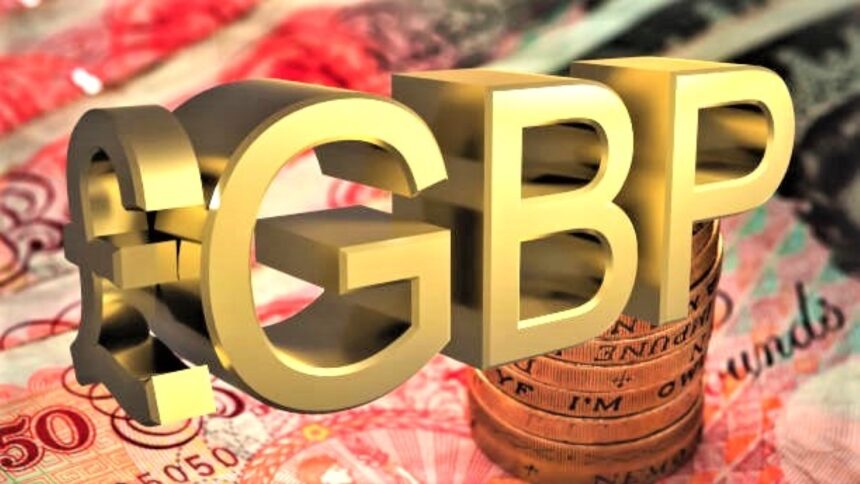Pound Awaits Policy Verdict: All Eyes on the BoE.
The Pound Sterling (GBP) remains on edge ahead of a key interest rate decision by the Bank of England (BoE), expected around 11:00 GMT Thursday. Traders bracing for heightened volatility as the Monetary Policy Committee (MPC) widely forecast to lower the benchmark interest rate by 25 basis points to 4.25%. This would mark the fourth rate cut since August last year, further confirming the BoE pivot toward a more accommodative monetary stance amid an evolving global economic backdrop.
A potential rate reduction largely being driven by a combination of softening inflation, falling energy prices, and fresh economic uncertainties stemming from new US. trade policies under President Donald Trump’s second term. Analysts at Bank of America (BofA) believe MPC member Swati Dhingra may advocate for an even deeper 50 bps cut, though the broader committee consensus appears to favor a more measured 25 bps trim.
BofA also projects at least two more rate cuts from the BoE before the end of the year, a view supported by recent economic data and rising geopolitical trade risks. This more dovish policy outlook could weigh on the Pound Sterling, especially if market participants had previously priced in a more cautious approach from the central bank.
Tariffs, Trade, and Trump: External Pressures Shape BoE Path
Much of the BoE’s decision-making environment shaped not just by domestic data but also by global headwinds. One of the most notable is the return of U.S. President Donald Trump, who set to announce his first major bilateral trade agreement since returning to the White House. Reports from The New York Times and Sky News indicate that this inaugural trade deal will be struck with the United Kingdom.
Though the announcement is expected to be symbolic—given the UK’s existing trade deficit with the U.S.—it comes at a sensitive moment. Trump’s aggressive use of tariffs and his shift toward protectionist policies have revived fears of a global trade downturn. These concerns, in turn, feed into stagflation risks: the uncomfortable combination of high inflation and sluggish economic growth.
Fed Chair Jerome Powell’s recent comments at a press conference echo this sentiment. Powell warned of increased uncertainty and noted that the economic landscape changing due to elevated tariffs. He cautioned that inflation pressures may remain persistent, with a potential rise in unemployment if trade tensions escalate further.
Pound Under Pressure: Fed Holds, Dollar Climbs
The GBP/USD currency pair faced renewed downward pressure on Thursday, slipping to around 1.3280 during European trading hours. Initial gains by the Pound were erased as the U.S. Dollar regained strength, supported by a hawkish hold from the Federal Reserve.
At its latest policy meeting, the Fed chose to leave interest rates unchanged in the 4.25%-4.50% range for the third consecutive time. The decision reflects the Fed’s ongoing concern about upside inflation risks. In his post-meeting remarks, Powell made it clear that “no rush” exists to start cutting rates. He also emphasized that inflation expectations must remain anchored amid increased uncertainty around trade and economic growth.
The U.S. Dollar Index (DXY), which tracks the performance of the Greenback against a basket of major currencies, rebounded to around the 100.00 mark—reflecting renewed safe-haven demand. This shift has put additional downside pressure on the GBP/USD pair ahead of the BoE announcement.
Trump’s Trade Deal with UK: Short-Term Symbolism, Long-Term Strategy?
While the GBP’s immediate reaction to the rumored UK-U.S. trade deal has been muted, the broader implications could be more significant. According to Sky News, both countries have reached a “heads of terms” agreement—marking a meaningful first step toward a full trade pact.
However, markets remain skeptical about the immediate economic benefits. The UK already maintains a trade deficit with the U.S., which limits the upside potential of such an agreement for Britain. Furthermore, any substantial gains may take time to materialize, as full trade negotiations typically span months, if not years.
Still, the announcement may serve as a political win for both Trump and the UK government, particularly as the latter seeks to demonstrate its post-Brexit trade independence. On the U.S. side, a quick bilateral deal also fits Trump’s narrative of prioritizing “America First” while establishing stronger control over global trade flows.
Trade War Watch: US-China Talks in Switzerland
In another crucial development, upcoming talks between the U.S. and China scheduled for Saturday in Switzerland have drawn considerable market attention. U.S. Treasury Secretary Scott Bessent suggested that the meeting would be “about de-escalation,” rather than securing any concrete trade agreement.
This distinction matters. While markets would welcome any step back from a full-blown trade war, the uncertainty surrounding Trump’s broader economic strategy continues to cast a shadow over global risk sentiment. This also complicates the outlook for central banks like the BoE and the Fed, who must calibrate their monetary policy against a backdrop of unpredictable fiscal and trade policies.
The mere anticipation of these talks has already influenced asset classes ranging from commodities to currencies, particularly those seen as risk-sensitive or trade-exposed. The British Pound, being closely tied to the UK’s global trade standing, is no exception.
Domestic Conditions: Inflation Eases, Growth Remains Fragile
On the domestic front, the UK’s inflation landscape has become more supportive of rate cuts. Headline inflation has cooled in recent months, largely due to a drop in energy and food prices. Core inflation—excluding volatile items—has also softened, though it remains above the BoE’s 2% target.
Despite improving price dynamics, economic growth remains tepid. Business investment and consumer confidence continue to lag, and wage growth has shown signs of moderation. This combination of factors strengthens the case for monetary easing, even as the BoE must weigh external pressures like the USD’s strength and global trade disruptions.
Market Outlook: Volatility Ahead for Sterling
As markets count down to the BoE’s rate decision, traders are preparing for potential sharp moves in the Pound. If the central bank delivers a dovish cut—accompanied by hints of further easing—the GBP may come under renewed selling pressure. Conversely, a more cautious tone or signs of a policy pause could provide temporary relief for the currency.
Market participants will also closely scrutinize the BoE’s policy statement and economic projections for clues about future moves. Particular attention will be paid to any changes in inflation forecasts or references to external risks like Trump’s tariffs or developments in US UK trade relations.
Key Levels to Watch
GBPUSD support: 1.3250 and 1.3180
GBPUSD resistance: 1.3360 and 1.3430
DXY resistance: 100.25
BoE rate cut probability: ~85% priced in by futures markets
Conclusion: Pound at a Crossroads
The Pound Sterling navigating a critical moment in its monetary and geopolitical journey. The BoE expected rate cut just one piece of a larger puzzle that includes trade uncertainty, rising stagflation risks, and volatile global capital flows. With US monetary policy holding steady and Trump’s trade agenda gaining momentum, the GBP could face a bumpy road ahead even if today’s rate cut already priced in.
[faq-schema id=”39526″]









